
views
Preparation

Know the difference between the three major types of bamboo. Bamboo plants are typically classified as clumping bamboo, running bamboo, or reeds. Reeds are rarely planted in yards, if ever, so you can expect to deal with either clumping or running bamboo. Running bamboo sends out rhizomes, which spread into other areas, causing the plant to become invasive. Clumping bamboo grows in tight clusters and rarely spreads out over larger areas.

Pick the best bamboo variety for your climate. Most bamboo varieties do best in tropical climates, but if you live in a somewhat cooler area, there are a few hardier varieties you can attempt to grow with some success. If you living in warmer hardiness zones, like zones 7 through 10, a few good choices might be Bambusa multiplex ‘Alphonse Karr’, Borinda boliana, and Phyllostachys nigra. The first two are clump bamboo types, while the last is running bamboo. For slightly cooler climates, like those found in hardiness zones 5 and 6, try the clumping type Fargesia dracocephala ‘Rufa’ or the running type Pleioblastus viridistriatus.
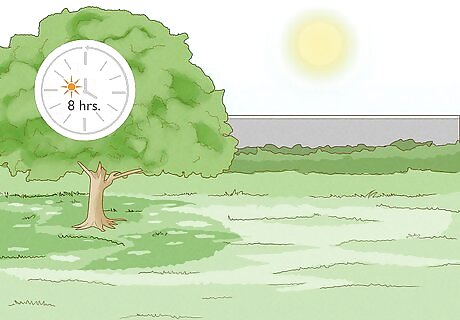
Pick the best spot in your yard. Bamboo needs a great deal of sun, so you should usually pick a spot in your yard that receives 8 or more hours of sun daily. Note that some tropical species do require shade during the hottest parts of the day, however. Shade can be especially important during winter. The combination of frost and direct sunlight can dehydrate the plant quickly. As such, if you live in an area that receives frost during winter, you should opt for a spot that receives partial shade instead of one with direct sun.
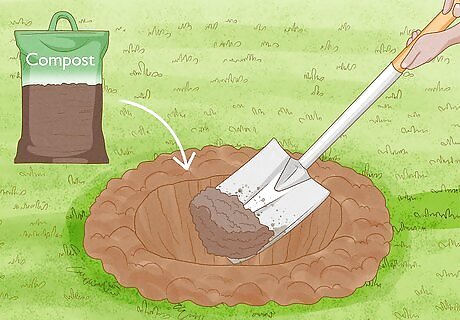
Amend the soil. While bamboo can do well in many types of soil, it does best in loam or marly soils. Improve your odds of success by digging and mixing in amendments to the soil before planting. Work garden compost or manure into the soil to provide it with additional nutrients. Ideally, the compost should be worked into the bottom of the transplant hole so that the bamboo roots sit on top of it. Loam soil is a mixture of five parts topsoil composted with two parts sand, two parts silt, and one part clay. Avoid rocky or soggy soils, as well as soils that are relatively impermeable.

Prepare for wind. Bamboo has a shallow root system, yet it also grows tall and fast. As a result, it can easily get damaged by strong winds. You will need a barrier to prevent this from happening. The easiest way to protect your bamboo is to position them behind garden hedges or trees. Otherwise, you might need to build a fence around the area.

Prevent bamboo from spreading. If you are planting running bamboo, you will need to construct a barrier to prevent the bamboo from invading other parts of your yard. After determining the area in which you want to confine the bamboo, install barriers of sheet metal or concrete around the perimeter. These barriers should be 3 to 4 feet (0.9 to 1.2 m) deep.
Planting
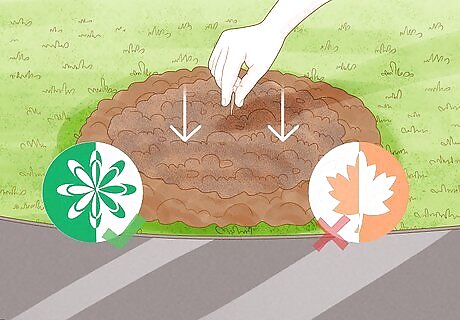
Plant during spring. Bamboo grows quickly and needs quick access to warm, frost-free temperatures. Sow the seeds after the final frost of the season for best results. If you are starting your bamboo plants from seeds, you should start in the very early spring so that the plants have enough time to establish themselves by summer. If you are transplanting established seedlings, any part of spring is suitable for planting. You should avoid planting bamboo in the fall, especially if you live in cooler climates, since the plant needs time to harden before cold, drying winds of winter begin. Conversely, if you live in severely hot climates that regularly reach temperatures hotter than 100 degrees Fahrenheit (38 degrees Celsius), you need to plant the bamboo early enough in the spring or in the early fall to avoid the intense heat of summer.
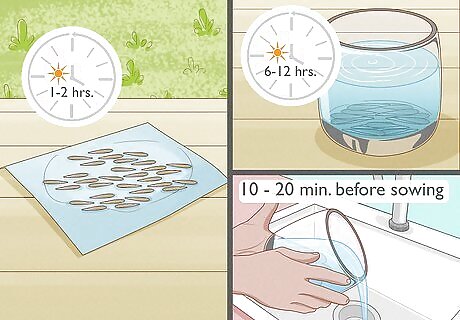
Prepare the seeds. Bamboo seeds need to be cleaned and dried in the sun for 1 to 2 hours. Afterward, you should soak the seeds in clean water to break them out of dormancy. Soak the seeds for 6 to 12 hours. Drain the water 10 to 20 minutes before you sow the seeds.

Plant the seeds in plastic seedling containers. If growing bamboo from seed, you will likely have better results if you plant the seeds in soil-filled plastic pallets meant for seedling growth. Fill the seedling containers with a mixture made from 8 parts topsoil, 1 part ashes, and 1 part fine wood chips or rice husks. Filter this mixture through a wire mesh to remove stones and debris before filling the containers. When filling the containers, leave the soil fairly loose. Make small holes 1 to 2 inches (2.5 to 5 cm) deep in the center of each seedling compartment. Drop one seed in each hole and cover the seeds gently with additional soil. Moisten the soil immediately and water daily. Let the seeds grow in an area of partial shade.
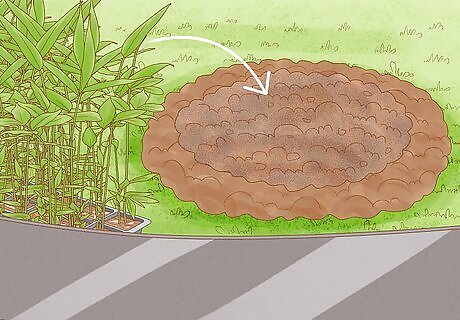
Transplant seedlings after 3 to 4 months. Even though adult bamboo grows quickly, in the early stages, most species of bamboo will not be strong enough to transplant any earlier than this. Transplant the seedlings into small, separate pots or into poly bags filled with a mixture made of two parts manure, three parts soil, and one part sand. Bamboo seeds usually germinate after 10 to 25 days, and initially, the leaves are very fragile. It takes 3 to 4 months before the seedlings produce a rhizome, or stem, capable of producing new sprouts. This is the point in time at which bamboo can be transplanted. Note that if you are transplanting bamboo seedlings instead of growing the plant from seeds, these are the instructions you need to pay attention to.
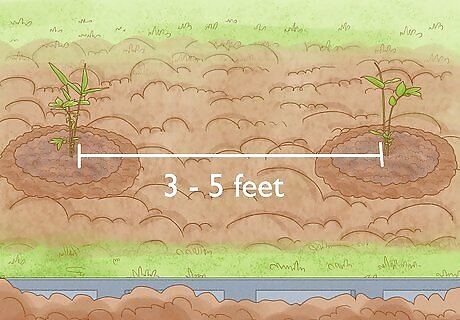
Space bamboo 3 to 5 feet (1 to 1 1/2 m) apart when transplanting them to your yard. If you ultimately want to create a dense screen of bamboo, you will usually need to plant the young seedlings this far apart early on. This is especially true of running bamboo. The plants should be transplanted to your yard once they reach 16 to 20 inches (40 to 50 cm) tall. Remove them from their pots or poly fill bags and place them directly into the ground. The hole you transplant the bamboo into should be roughly twice as wide as the bamboo root mass. If working with clumping bamboo, you can place them within 1 to 2 feet (30.5 to 61 cm) since these varieties will not spread out much. Note that clumping bamboo gains 1 to 2 feet (30.5 to 61 cm) of height yearly, while running bamboo gains 3 to 5 feet (0.9 to 1.5 m) of height yearly and spreads out at about the same rate.
Daily and Long-Term Care
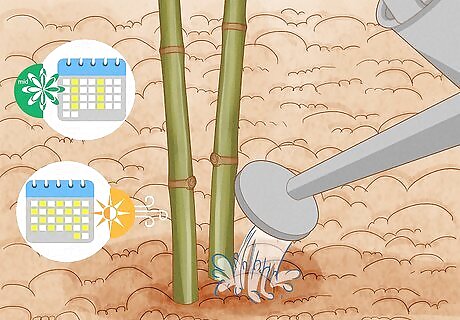
Water the bamboo regularly. Most species of bamboo require consistent watering, but you should not let the bamboo roots sit for an extended period of time in excess water. Bamboo seeds and young shoots should be watered daily during mild and dry weather. After bamboo plants have been established in your yard, you should water them twice a week during mild weather and three to four times a week during hot or windy weather.
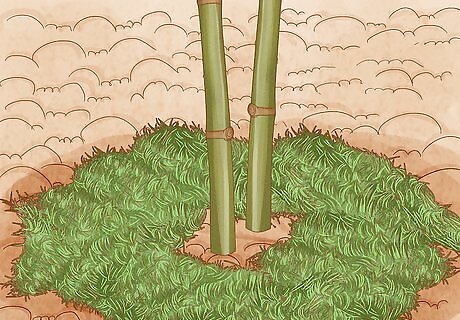
Spread mulch. Organic mulches help keep bamboo growth in check and can protect the bamboo from potential threats. Grass clippings make one of the best mulches for bamboo since they are rich in nitrogen and silica. Compost and hay can work well, too, as do many other types of organic and untreated mulch.
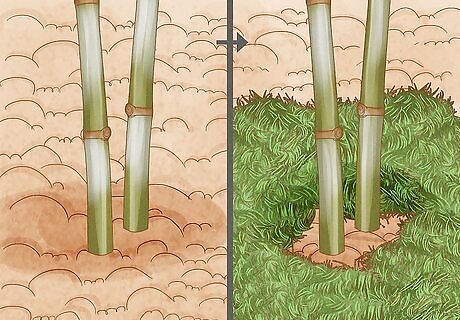
Protect the bamboo in winter. Bamboo is a warm weather plant, so you should take extra precautions during winter to prevent the plant's roots from completely freezing. Apply an extra thick layer of mulch to protect the root systems of the mulch during freezing temperatures. If cold, harsh winds are a problem, you might need to construct a temporary barrier to shield your bamboo. If your bamboo takes on a dry look or silver color, this could be an indication of cold injury.
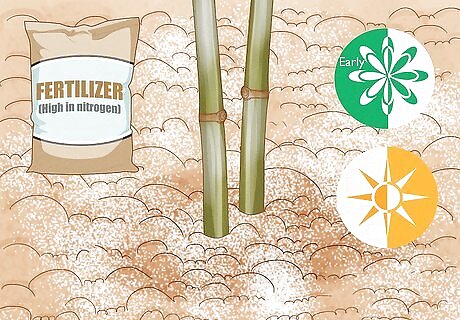
Use a fertilizer high in nitrogen. Organic fertilizers are often recommended, and nitrogen promotes stronger, greener plant growth, so a fertilizer fairly high in nitrogen is usually best. Apply fertilizer once in the early spring and once in the summer. This schedule corresponds to the main growth seasons of bamboo. If using an organic and mild bamboo, you can apply fertilizer monthly throughout the spring, summer, and early fall.
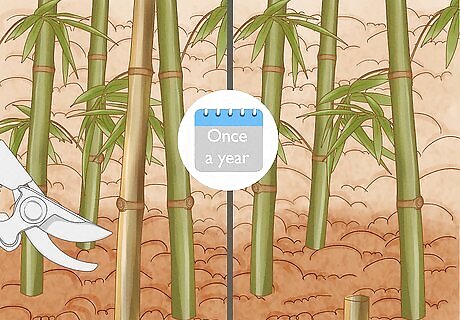
Thin and prune the bamboo as needed. As bamboo spreads, you might need to thin it out to prevent the stalks from crowding into one another and cutting off nutrient supplies. If you want to prevent running bamboo from spreading and do not have a barrier installed that can do so, you will need to cut new shoots off at ground level as soon as they appear in areas you do not want the bamboo in. Remove old, unattractive bamboo branches once a year. Trim them back until they look neat. If you cut bamboo just above a node, it can grow back. Make sure you remove dead leaves from around the base of the bamboo. It's ok to leave some, though, as they will add silica to the roots.

Protect the bamboo against pests and disease. Bamboo is resistant to most pests and diseases, so you only need to apply pesticide and fungicide after a problem develops. Some species of bamboo can fall victim to scale insects, red spider mites, and rust. Since adult bamboo is fairly hardy, however, mites are usually only a problem for new shoots. If you suspect that pests or fungi are a threat to your bamboo, quarantine new plants and spray them with a miticide or fungicide before transplanting them.
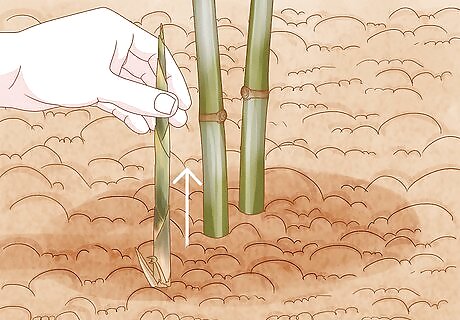
Consider harvesting your bamboo. Fresh shoots of bamboo can be used for food, so if you want to add it into your diet, harvest young shoots within the first couple of months. Bamboo is best when fresh, but you can also can it or freeze it for long-term food storage. Fresh bamboo has a crisp texture and sweet flavor. Bamboo is a good source of fiber and is roughly equal to the onion in terms of nutritional benefits. Bamboo is most commonly enjoyed as a food in the East and Southeast Asian regions of the world.

















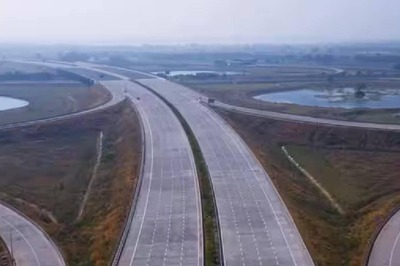

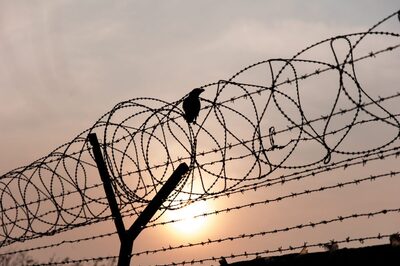
Comments
0 comment